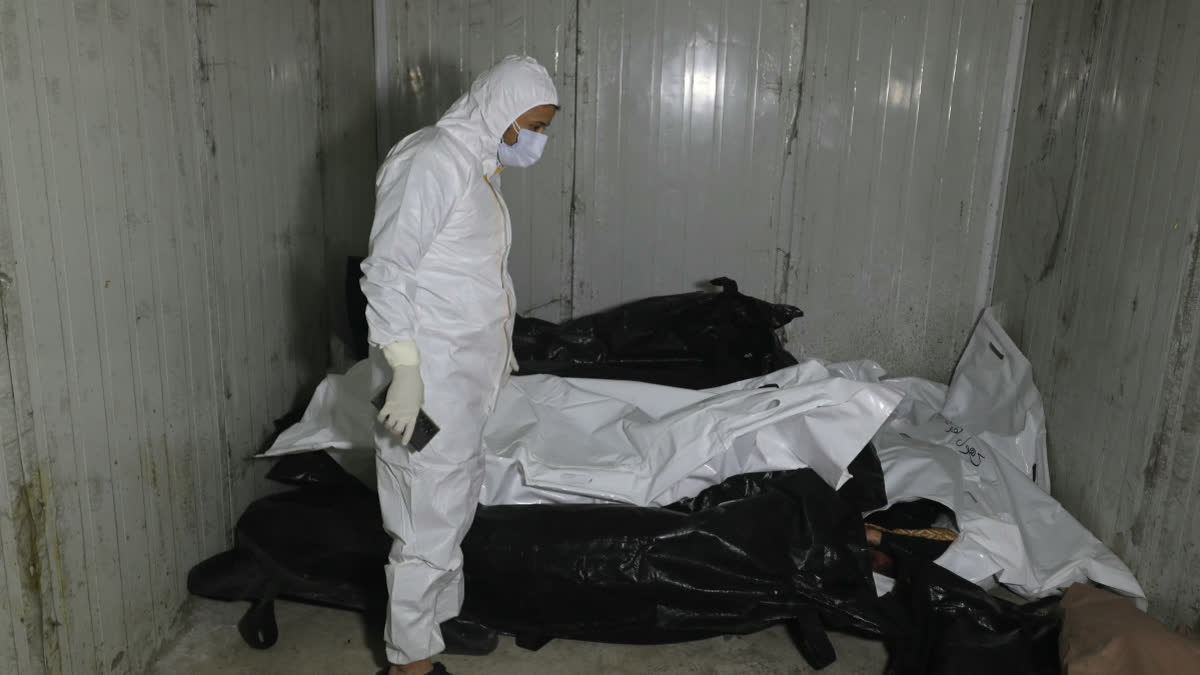Beirut:Rebel fighters told AFP they found around 40 bodies bearing signs of torture inside a hospital morgue near Damascus on Monday, stuffed into body bags with numbers and sometimes names written on them.
"I opened the door of the morgue with my own hands, it was a horrific sight: about 40 bodies were piled up showing signs of gruesome torture," Mohammed al-Hajj, a fighter with rebel factions from the country's south told AFP by telephone from Damascus.
AFP saw dozens of photographs and video footage that Hajj said he took himself and showed corpses with evident signs of torture: eyes and teeth gouged out, blood splattered and bruising.
The footage taken in Harasta hospital also showed a piece of cloth containing bones, while a decomposing body's rib cage peaked through the skin.
The bodies were placed in white plastic bags or wrapped in white cloth, some stained with blood.
Corpses had pieces of cloth or adhesive tape bearing scribbled numbers and sometimes names.
Some seemed to have been killed recently.
Sanitary servicemen carry the bodies of dead persons (AFP) While some of the dead were wearing clothes, others were naked.
Islamist-led rebels seized power on Sunday ousting former President Bashar al-Assad, whose family ruled Syria with an iron fist for more than five decades.
At the core of the system of rule that Assad inherited from his father Hafez was a brutal complex of prisons and detention centres used to eliminate dissent by jailing those suspected of stepping out of the ruling Baath party's line.
Thousands of people hoping to reunite with loved ones who disappeared in Assad's jails had gathered Monday evening at the notorious Saydnaya prison outside Damascus, AFP correspondents said.
Hajj said the fighters received a tip from a hospital worker about the bodies that were being dumped there.
"We informed the military command of what we found and coordinated with the Syrian Red Crescent, which transported the bodies to a Damascus hospital, so that families can come and identify them," he added.
Diab Serriya, who co-founded the Association of Detainees and the Missing in Sednaya Prison (ADMSP) watchdog, told AFP the bodies were likely detainees from Saydnaya prison.
"Harasta Hospital served as the main centre for collecting the bodies of detainees," he said.
"Bodies would be sent there from Saydnaya prison or Tishrin Hospital, and from Harasta, they would be transferred to mass graves," he added.
Sanitary servicemen carry the bodies of dead persons (AFP) "It is very important to document what we are seeing in the video."
According to the British-based Syrian Observatory for Human Rights war monitor, at least 60,000 people have been killed under torture or because of terrible conditions in Assad's detention centres.
Since the start of the conflict, President Bashar al-Assad's government has been accused of human rights abuses and of cases of torture, rape and summary executions.
Hajj said he hoped that efforts would focus on "exposing the crimes committed by Assad in prisons and detention centres" during the transitional period.
"We hope Assad will be held to account as a war criminal," he said.
